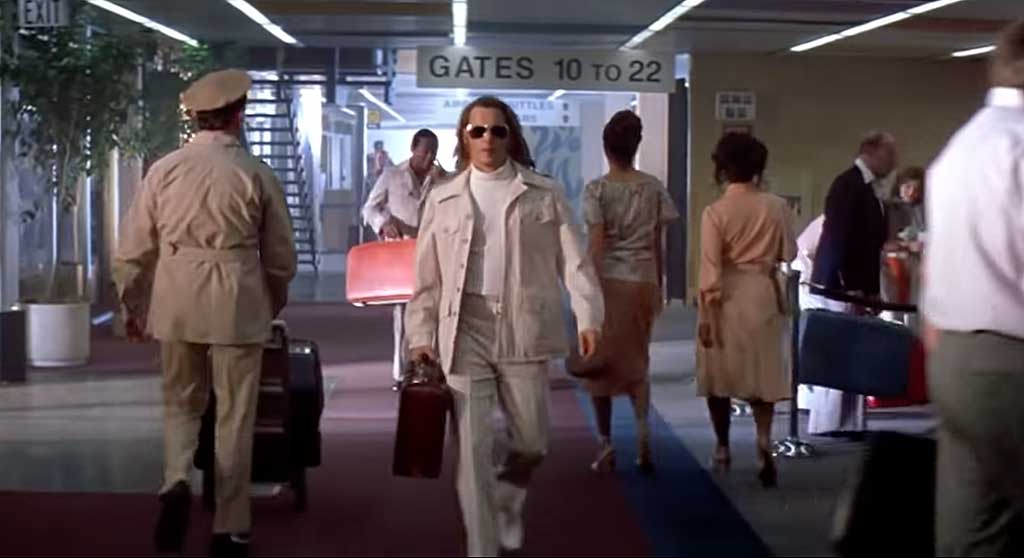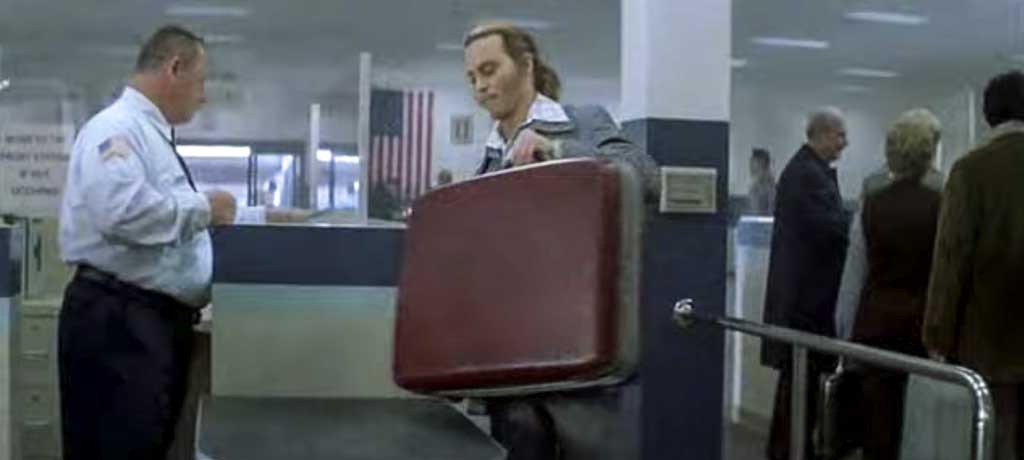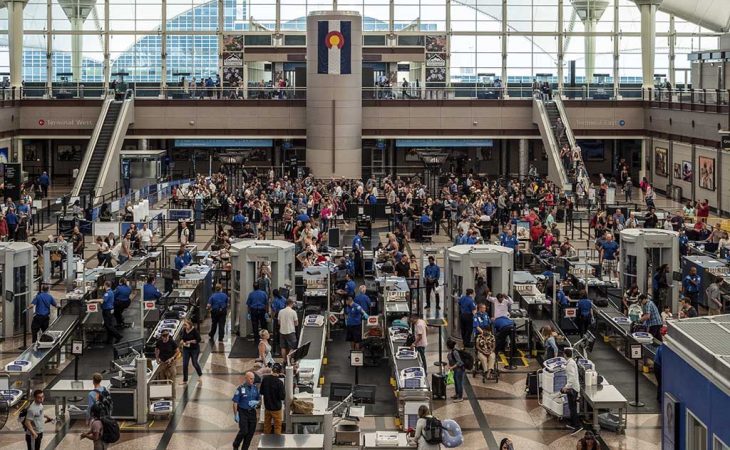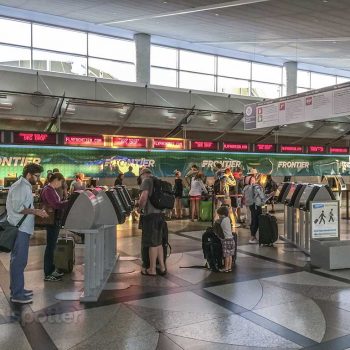I was watching a movie set in the 1980’s last night, and I found it fascinating to watch the main character smuggle an entire suitcase of narcotics through airport security with relative ease. Those were the days, eh? But what about modern times and the latest in high-tech scanning technology? Do airport scanners detect drugs?
Technically, modern Millimeter-Wave and Backscatter airport security scanners do not detect drugs. However, they make them very easy to spot, and the chances of someone getting caught depends entirely on how attentive the airport security crew is.
Not that I’m advocating that you try to smuggle an entire suitcase of blow through the security checkpoint at LAX or anything. All I’m saying is that your chances of success are about 5% to 10% with some creative diversion techniques. Do with that information what you will.
The use of scanners for detecting drugs in airports
Today’s airport security scanners are, in more general terms, known as body scanners. They are machines designed to detect objects that are on or under the clothes.
In other words, it’s possible to do a full body search without having to undress people or make physical contact. Usually, those operating the scanning device will see an animated version of the person scanned. It usually looks like a silhouette of a human body without the kinky bits.
The clarity of what the operator sees is usually dependent on the sophistication of the device technology. However, for privacy concerns, the person running the scan will never be able to see overly-detailed representations of a naked body. As the scan gets carried out, the indicator marks any part that seems suspicious.

The rise in the use of scanners began in the 2000s when the attempts to smuggle bombs into airports and onto aircraft became a more common and credible threat.
Most airport security systems up until then were metal detectors. The discovery of an increasing amount of passengers transporting hard drugs became a rising concern as well. This led to the need for more powerful (and smarter) scanners at airports.
Today’s airport security scanners not only spot things concealed under clothes but can also see things in luggage. The scanners are so sensitive that they detect mere hairpins, bra metal wirings, and so on. They even found a small paper clip in my pocket once, which is frighteningly thorough.
The 2 types of scanners used in US airports and how they work in drug detection
The USA has the highest number of airport scanners in use. Over 172 airports are using them at the time of this writing.
For the sake of simplicity, electronic scanners used at US airports for security screening get grouped into two main categories:
- Baggage scanners
- Full-body scanners (Millimeter-Wave and Backscatter scanners)
1. Baggage scanners
This kind of scanner, as the name implies, searches passenger baggage. The scanner penetrates bags with X-ray radiation. It captures images of objects contained in all types of checked baggage.
The captured images are displayed on a screen on the opposite end of the scanner. These images get interpreted by airport security personnel.
As a bag scanned goes through the scanner, it absorbs radiation energy from the X-ray. The density of contraband such as drugs is very well known, and is easy to spot by airport security.
Once a detector identifies an object with a suspicious density, the bag will be flagged for the additional inspection.

2. Full-body scanners
Full-body scanners identify both metallic and non-metallic items. However, these scanners cannot detect drugs inside the body. This is what makes these types of scanners different from medical X-rays.
There are two types of full-body scanners in use in USA airports:
- Millimeter-Wave scanner
- Backscatter X-ray scanner
Millimeter-wave scanners
Known as Advanced Imaging Technology (AIT) scanners, Millimeter-Wave devices use millimeter-wave imaging, which bounces electromagnetic waves off the transmitter to the object being scanned (which provides an animated reflection). It is a powerful tool for finding threats or contraband on a person.
The scanner transfers reflections as images, employing colors to note places that need actual screening. It will display a green light once a passenger is found clean.
Since the US allows passengers to opt-out of using a body scan, some passengers choose a pat-down instead. I’ve had my fair share of these, and I can assure you that they are not pleasant.
Backscatter X-ray scanners
Backscatter X-ray scanners used to be the most common type before the advent of Millimeter-Wave.
A Backscatter X-ray scanner screens passengers with ionizing radiation deflected by the human body. However, it was a controversial method of scanning since it was deemed to be overly-revealing of bodies. Because of privacy concerns, most were replaced by AIT scanners.
To address privacy concerns, the viewing officer is in a different location and has no interaction with the individuals being screened.
The backscatter device is capable of metal and nonmetal detection. It will easily detect things like drugs – as long as it is on the body.
Despite being not as common as Millimeter-Wave scanners, there are still a handful of Backscatter units remaining in airports around the US.
What’s the difference between Millimeter-Wave and Backscatter scanners?
- The Backscatter X-ray scanner needs a frontal and rear picture for detection purposes.
- The Millimeter-Wave scanners require only a single image, and they use less energy.
Scanners used in airports outside of the US
Most major airports around the world use the same Baggage and Full-body scanners found in the US. As a matter of fact, the FAA requires that all passengers arriving on flights bound for the US must be screened by one of these types of scanners.
Here are a few notable things to know about drug-detecting scanners in airports abroad:
- The first country to use these scanners on a commercial scale was the Netherlands. Specifically, Schiphol Airport (AMS).
- Despite the success of these scanners in apprehending drug smugglers, the Italian government has / had reservations about these types of scanners. They feel they slow down processes (and that they are ineffective). They even planned to remove them from their airports in 2010 – but it never happened.
- In Australia, the no opt-out policy is very strict. Expect a full (invasive) private body search if you refuse. Only infants and young children under 140 cm do not have to go through a body scan.
- 24 airports in Canada use these scanners. However, only passengers selected for a secondary search do a full-body scan. Passengers can opt for a manual pat-down instead.
- In some other countries, a screening device known as the Terahertz scanners are in use. These are covert scanners that are hidden from passengers, and they can detect anything hidden (as long as it is somewhere on the body). Drugs wrapped in any form and hidden on the body will not go unnoticed with this scanner. The most nerve-racking part is that you do not know where (or when) it is scanning you.
What kinds of drugs can and cannot be detected by these scanners?
Knowing which kind drugs can go undetected by airport scanners isn’t an exact science, as the technology is always changing.
Here’s what we know today:
- Today’s airport security scanners will not expressly locate a drug or substance and name it. They simply have sensors that will highlight them as targets.
- Once highlighted, it’s up to a security agent to perform a deeper check (which can include anything from a simple pat down to a full strip search in a private room).
- If someone has any kinds of drugs on their body, these scanners have a very high probability of making airport security personnel aware of their existence.
- This probably goes without saying, but they find contraband, they are not giving any of it back.
The best story (ever) of how an airport scanner detected drugs
The story of 31-year-old Marsha Reynolds is fascinating. The model turned JetBlue flight attendant was nabbed trying to smuggle nearly 70 lbs of blow (while on duty) at LAX on March 24, 2016.
As she bypassed the main security checkpoint (as she was legally able to do as a member of a flight crew) she was stopped for a random check by Transportation Security Administration (TSA) officers in Terminal 4.
She was fully cooperative at first. But then, knowing what was about to happen, she ditched her high-heels and ran out of the airport at full-speed leaving all her luggage behind.
Not surprisingly, it turned out that her bags contained 11 packages of narcotics (potentially worth millions of dollars).
She eventually surrendered to security agents at John F. Kennedy International Airport in New York City two days later.
Reynolds pleaded guilty to a federal narcotics trafficking offense. She confessed to being only a transporter, and claimed that she was being paid by someone else.
In my opinion, turning herself in was the best thing she could have done. Losing someone else’s drugs (worth millions) likely put her in grave danger of being whacked (to put it mildly). But that’s a topic for another post…
It all comes down to this:
- It’s not the easy and breezy 1980’s anymore, and the likelihood of someone successfully smuggling drugs through airport security these days is slim to none.
- Flying with medication is different than flying with illegal drugs. Drugs you have a prescription for is ok.
- If you think you can do it, I suggest asking yourself really important questions such as: can you fly with a warrant? Spoiler alert: you can’t if you have drug-related charges against you.
- Someone attempting to smuggle drugs isn’t entirely safe once they get on the plane either. If an air marshal is onboard and has any suspicion that he or she might have drugs in their possession, they can arrange to have authorities waiting at the gate upon arrival. Knowing how to spot an air marshal may be convenient in this case.
- I’m not suggesting anything by saying this, but…I recommend reading my JetSuiteX review if you have any interest in flying on an airline that doesn’t require their passengers to go through a security scanner. Just sayin’.




